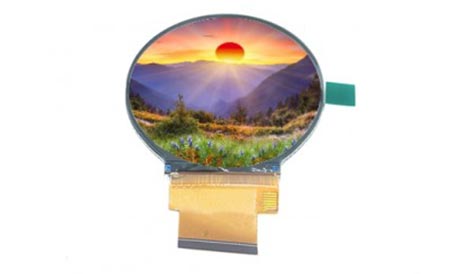Which is better, TFT or OLED?
Views: 315 Update date: Jul 19,2024
In the world of displays, two technologies have been at the forefront of innovation and consumer demand: Thin-Film Transistor (TFT) and Organic Light-Emitting Diode (OLED). Both TFT and OLED have their own set of advantages and disadvantages, but which one truly stands out as the better display technology?
TFT displays have been around for decades and have been the go-to choice for various applications, including laptops, monitors, and even smartphones. They rely on a thin-film transistor layer that controls the flow of current to each pixel, allowing for precise color reproduction and high-resolution images.
TFT displays are typically less expensive to produce compared to OLEDs, making them a popular choice for budget-conscious consumers. They also tend to have better viewing angles, meaning the colors and brightness remain consistent even when viewed from extreme angles.
OLED displays, on the other hand, have gained significant popularity in recent years due to their superior picture quality and innovative features. Each pixel in an OLED display is an individual light source, meaning it can be turned on or off independently. This allows for true blacks, infinite contrast ratios, and excellent color accuracy.
OLED displays also offer a wider color gamut, meaning they can reproduce a wider range of colors than TFT displays. This results in more vibrant and lifelike images, especially when watching movies or playing games.
Moreover, OLED displays consume less power since they only need to illuminate the pixels that are being used. This makes them ideal for mobile devices like smartphones, where battery life is crucial.
However, OLED displays have a few drawbacks as well. They tend to be more expensive to produce due to the complex manufacturing process. Additionally, OLED displays can experience like issues burn-in over time, where static images or UI elements leave permanent marks on the screen.
So, which display technology is better? The answer isn't straightforward as it depends on your specific needs and preferences.
If you're looking for a budget-friendly display with good viewing angles and color reproduction, TFT might be the right choice for you. On the other hand, if you prioritize picture quality, color accuracy, and battery life, OLED displays are likely to meet your expectations.
Ultimately, both TFT and OLED have their own strengths and weaknesses, and the choice between them should be based on your individual needs and preferences.
TFT Displays
TFT displays have been around for decades and have been the go-to choice for various applications, including laptops, monitors, and even smartphones. They rely on a thin-film transistor layer that controls the flow of current to each pixel, allowing for precise color reproduction and high-resolution images.
TFT displays are typically less expensive to produce compared to OLEDs, making them a popular choice for budget-conscious consumers. They also tend to have better viewing angles, meaning the colors and brightness remain consistent even when viewed from extreme angles.
However, TFT displays have a few downsides. One major limitation is their backlighting system, which can lead to issues like backlight bleed and lower contrast ratios. Additionally, TFT displays tend to consume more power than OLEDs, especially in dark environments where the backlight is still fully illuminated.
OLED Displays
OLED displays, on the other hand, have gained significant popularity in recent years due to their superior picture quality and innovative features. Each pixel in an OLED display is an individual light source, meaning it can be turned on or off independently. This allows for true blacks, infinite contrast ratios, and excellent color accuracy.
OLED displays also offer a wider color gamut, meaning they can reproduce a wider range of colors than TFT displays. This results in more vibrant and lifelike images, especially when watching movies or playing games.
Moreover, OLED displays consume less power since they only need to illuminate the pixels that are being used. This makes them ideal for mobile devices like smartphones, where battery life is crucial.
However, OLED displays have a few drawbacks as well. They tend to be more expensive to produce due to the complex manufacturing process. Additionally, OLED displays can experience like issues burn-in over time, where static images or UI elements leave permanent marks on the screen.
So, which display technology is better? The answer isn't straightforward as it depends on your specific needs and preferences.
If you're looking for a budget-friendly display with good viewing angles and color reproduction, TFT might be the right choice for you. On the other hand, if you prioritize picture quality, color accuracy, and battery life, OLED displays are likely to meet your expectations.
Ultimately, both TFT and OLED have their own strengths and weaknesses, and the choice between them should be based on your individual needs and preferences.




